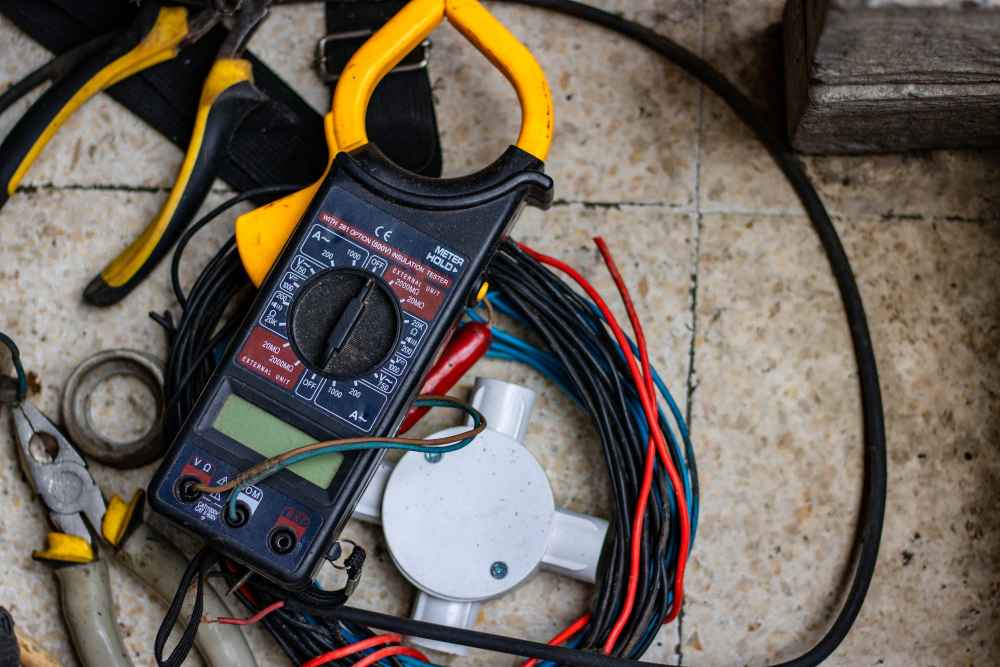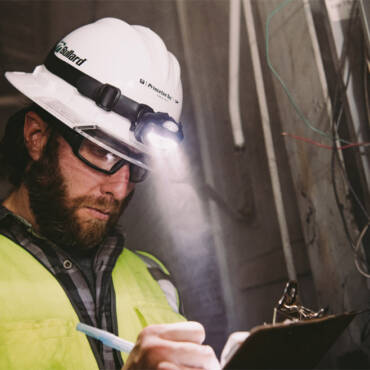by Denver Plumbing, HVAC, $ Electrical Company
DIY projects around your home can help save money. But when you decide to tackle your own electrical projects or repairs, you could run into some serious issues. Electrical wires are color-coded to make it easier to understand what purpose each wire provides. This is very important because your home is riddled with both “hot” and neutral wires. Hot wires pose a serious safety hazard and must be avoided at all costs. When you make the mistake of touching, snipping or even accidentally damaging the wrong wire, the results could be deadly.
Unless you understand what each wire does, it is best to leave the electrical work up to a Denver electrician. The team at Bell Plumbing, Heating, Cooling, & Electrical can take care of all your electrical needs. That said, if you do encounter wires in one of your DIY projects, here is what each color means with some tips to keep you safe.
Black Wires
Hot wires come in a few variations including black, red, and white with black or red tape. A hot wire has a live current running through it which means you can shock yourself if you snip them or touch the open ends. Although black and red always indicate the wire carries power, if you encounter wires with red or black tape, these wires are also hot.
Red Wires
Although red wires tend to be what is considered “secondary” hot wires, they are dangerous nonetheless. Keep an eye out for red wires when doing a project such as installing a ceiling fan.
Green Wires
Green wires are insulated wires used for grounding. You might also come across green screws on electrical devices.
White and Gray Wires
White is the most common color used for neutral charged wires. Neutral charged wires still carry power and, in some cases, also come in gray. Neutral wires are used to carry power back to the service panel, but can still cause injury and shocks when handled improperly.
Blue and Yellow Wires
In some cases, you might come across blue or yellow wires if you have three-way or four-way switches. These wires are hot and often used for travelers for these applications.
How to Troubleshoot Your Home’s Wires
When working on any DIY projects in your home it is a good idea to keep a multimeter handy. This way if you come across wires, you can check for a live current. You can encounter wires when working on projects where you get in behind the drywall, or even in ceilings and floors. You can determine if the wire is hot, to avoid shock. Keep in mind there is no telling what wires have been repaired or installed by previous homeowners. Therefore, never assume a wire is neutral based on its color to be safe.
Safety Tips for DIY Projects
If you are undergoing DIY projects, you can use these precautions to avoid shock:
- Shut Off the Power: This is the easiest way to avoid shocks. The power is not just the switch, but the power source in your fuse box. If you are using power tools, battery-powered tools allow you to work without the need of electricity.
- Double Check Sockets: If you are working near or on sockets, and think you’ve turned off the power, always plug something in to be safe. Switch on the light switch as well before you attempt to make repairs or replacements.
- Use a Cable Detector: Any project that requires drilling or removing drywall should begin using a cable detector. This will ensure you know where cables are located so you don’t accidentally drill directly into a live wire.
- Use a Residual Current Device (RCD): This tool automatically cuts off the power if it senses an electrical fault.
- Opt for Battery-Powered Tools: As mentioned above, battery-powered tools make projects safer so you can work with the electricity off. They can also help you avoid shocks from tools that are damaged.
When you are working on electrical projects, it is always best to hire a professional. While your DIY projects might run into wires during the course of the job, actual electrical work should only be performed by a registered electrician.
Dangers of Miscoloring Wires
If for some reason you are installing or repairing wires, always be sure you use the right color wire. When you use a white or gray wire as a hot wire, for example, an electrician coming into your home could be killed thinking the wire is neutral.
Understanding what the different colors mean for wires can prevent serious injury or even death. When taking on an electrical project speak to the team at Bell Plumbing, Heating, Cooling, & Electrical in Denver to ensure everything is installed or repaired properly.
Whether you require installation, repair, or maintenance, our technicians will assist you with top-quality service at any time of the day or night. Take comfort in knowing your indoor air quality is the best it can be with MOE heating & cooling services Ontario's solution for heating, air conditioning, and ventilation that’s cooler than the rest.
Contact us to schedule a visit. Our qualified team of technicians, are always ready to help you and guide you for heating and cooling issues. Weather you want to replace an old furnace or install a brand new air conditioner, we are here to help you. Our main office is at Kitchener but we can service most of Ontario's cities
Source link




Add Comment